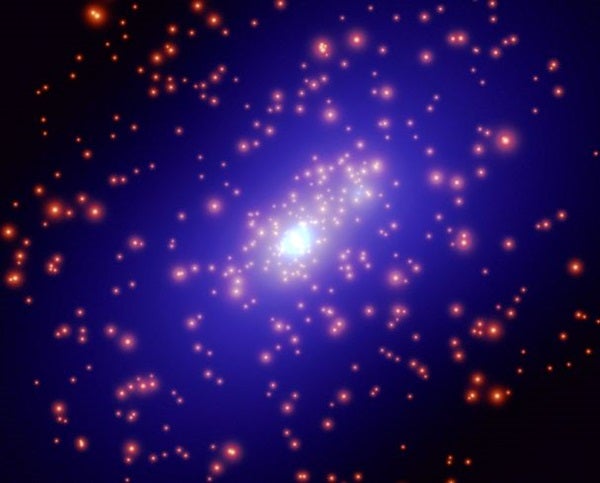Published in Physical Review Letters on January 24, a paper composed by the group of international astrophysicists outlines how their computer simulation, coupled with evaluation of the galaxy’s oldest stars, could hold the answer to determining dark matter’s speed.
“Essentially, these old stars act as visible speedometers for the invisible dark matter, measuring its speed distribution near Earth,” said assistant professor of physics at Princeton University, Mariangela Lisanti, in a press release. “You can think of the oldest stars as a luminous tracer for the dark matter. The dark matter itself we’ll never see, because it’s not emitting light to any observable degree — it’s just invisible to us, which is why it’s been so hard to say anything concrete about it.”
Why old stars?
The work began as the idea that a subset of stars in the galaxy might allow astronomers to view the invisible motion of dark matter. Current theory dictates that the Milky Way’s pervasive dark matter halo is actually built up of smaller “subhalos,” which also contain stars as well as dark matter. “Our hypothesis was that there’s some subset of stars that, for some reason, will match the movements of the dark matter,” said Jonah Herzog-Arbeitman, a co-author of the paper.
To use stars as a third-party observation method, they first had to figure out which stars behave similarly to dark matter. To do so, the team used Eris, a computer simulation that mimics the behaviors of objects in the Milky Way, like stars and dark matter.
The team used data plots created by Eris to compare characteristics of dark matter to characteristics of various subsets of stars, including stars with varying metallicities. Metallicity is a measure of the ratio between the lighter elements and the heavy metals (like iron) in a star. Because metals are created in supernovae and through the mergers of neutron stars, researchers are able to estimate a star’s age by evaluating its metallicity, which is partially based on the availability of heavy elements when it formed. The smaller galaxies that the Milky Way has accreted over time (full of stars and dark matter) are known to have lower amounts of heavy metals.
In the simulation’s output, the curves depicting dark matter’s velocity lined up uncannily with those of the stars with lower amounts of heavy metals — older stars from long-ago accreted galaxies. Looking back, the researchers said that the connection between ancient stars and dark matter isn’t all that surprising. “The dark matter and these old stars have the same initial conditions: they started in the same place and they have the same properties,” said Necib.
A different way to detect dark matter
Using simulations to evaluate the speed of dark matter is an entirely different approach compared to previous studies. Over the past decade, researchers have largely been using detectors made of dense matter, like xenon, placed deep beneath Earth’s surface to see if dark would smash into the tightly packed atoms, causing a visible reaction. However, both the mass and the speed of dark matter affect the success of these experiments. That’s why astronomers have been trying to detect dark matter’s speed so intently.
If dark matter is slow and lightweight, it likely doesn’t have the kinetic energy needed to noticeably interact with the dense matter, causing any collisions to go undetected. And that’s in line with reality — so far, researchers have yet to catch sight of a dark matter interaction through this method. As Lisanti pointed out, “Have we not seen anything because there’s something different in the speed distribution than we expected?”
Because it’s so difficult to pinpoint (and impossible to see), using a computer simulation to determine the speed of dark matter might allow the next breakthrough in finally establishing its velocity and other properties. For now, though, the simulations are simply theoretical, and don’t constitute scientific evidence. Further field research is first required to determine the exact speed of these ancient stars before they can be potentially tied to the velocity of our galaxy’s dark matter.
However, it might not be long until we can corroborate these findings. The European Space Agency’s Gaia satellite is working on collecting such data for nearly a billion stars, and when they release their findings, this theoretical finding might just turn into a solidly scientific result.










